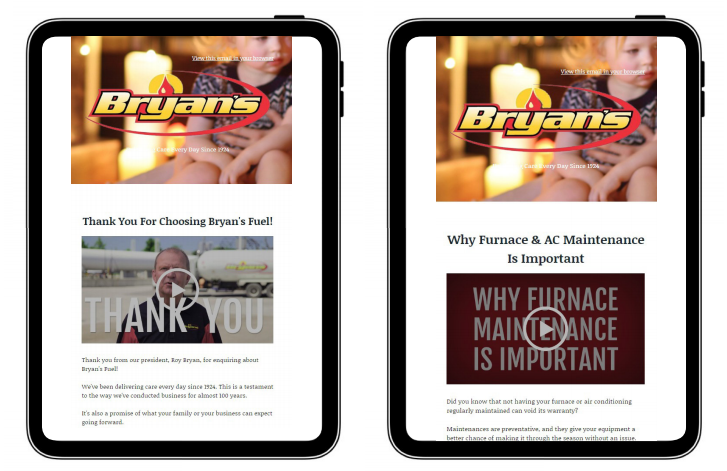What Is The Most Critical Part Of Generating Leads? The Follow-Up!
By Robert Murray
What is the most critical part of generating leads? The follow-up!
This is by far the most important part of the process.
In this blog, we’re going to explore three ways you can use an automated follow-up to help with response time and improved customer experience.

However, before we jump into each of these three auto-responders, consider the following staggering statistics that highlight the value of following up:
- Less than 7% of businesses respond in 5 minutes or less
- 78% of customers buy from the first responder
- Sales conversions decrease 391% after the first minute
- Wait longer than 5 minutes to respond and you’ll see an 80% decrease in lead qualification
- Right now, 55% of companies take 5+ days to respond
Knowing that a quick follow-up matters (a lot!), what can we do?
1) Auto-responders
This is the simplest way to execute an immediate response.
Auto-responders are messages that get sent automatically when someone fills out a form on your website. You can use merge tags to personalize auto-responders so they don’t feel completely robotic. You can also provide response time expectations or an alternative method of communication for a more timely response.
Here’s an example of an auto-responder from the New Approach Painting website. It acknowledges the inquiry has been received and provides an expectation of when someone will be in touch.
2) Calendly
Calendly is a great way to give potential customers an opportunity to book a phone call right into your calendar’s availability! Just include the link on your auto-responder message.
There are two main ways to leverage this, depending on your organization:
- Use the sales person’s calendar.
- Use a shared organizational calendar and whoever is available can take the call.
Here’s an example of what Calendly looks like:

You can also check out one of our Calendly accounts and if you’d like to book an initial call. Simply fill out the form!
3. Drip Campaigns
Drip campaigns are a great way to get (and stay) in front of your current or potential customers. The idea is simple:
When someone fills out a form on your website, they get added to an email list. Everyone added to this email list is then sent a series of emails that have predefined content and delivery times.
As an example, let’s say someone fills out the form on your website. What would a drip campaign do next? Well, it’d ensure they received an immediate response acknowledging the inquiry. One week later, they’d get another message that provides value. Then they receive additional messages at the following times:

- 3 weeks after they submitted
- 6 weeks after they submitted
- 12 weeks after they submitted, and
- 20 weeks after they submitted (a final touchpoint)
There are a whole bunch of considerations to keep in mind when building a drip campaign. In this blog, we’ll focus on a few key points:
- Keep it simple. Use Mailchimp if you don’t have a Customer Relationship Management (CRM) system that’s capable of doing this.
- Make the messages valuable, helpful, and informative. Not sales-y!
- The content for the emails needs to helpful enough to be relevant, but also generic enough that they will be useful even after a prospect converts and becomes a customer.
- A drip campaign is Canadian Anti-Spam Legislation (CASL) compliant. If you’d like to know why, you can read this excerpt from the Government of Canada’s Website.
Here’s an example of a drip campaign from Bryan’s Fuel:
 And here is a sample report of the drip campaign’s success. Check out the open and click rates!
And here is a sample report of the drip campaign’s success. Check out the open and click rates!

The best part of the drip campaign approach is that it is generating leads while you’re sleeping! You can set it and forget it.
WANT TO LEARN MORE?
DOWNLOAD THE COMPLETE MARKETING GUIDE TO GENERATING LEADS NOW
